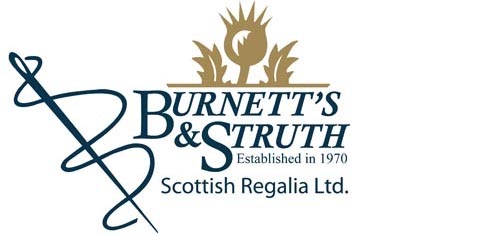Have you ever wondered how tartan is made? From dyeing the yarn to weaving, every stage must be done with a huge amount of care and attention. So the next time you wrap up warm in a luxurious tartan lambswool or cashmere scarf or don your kilt for a spot of ceilidh dancing, just think of the love and effort that went in to creating each one.
At the Lochcarron of Scotland mills in Selkirk, in the beautiful Scottish borders, over 500 different varieties of tartan from Blackwatch to Royal Stewart are woven each year. Weaving fabric, and especially tartan, is a meticulous and painstaking process, undertaken by skilled and experienced craftspeople. At the mill, there are several key steps that go into creating our fabrics;
To give you a little more insight into the weaving process and how tartan is made we took some action shots in the mill….so here is how it’s done.

First up is Winding:
We wind the ecru yarn (ecru is the natural creamy white shade of wool) onto special flexible cones which are used for the dyeing process.

Then for the Dyeing:
There is a vast archive of yarn colour recipes and the experienced staff are expert at maintaining good consistency of colours and can also match colours and create new recipes.
- The dye colours are applied in water
- Once drained, the yarn is placed into a spin dryer for 12-15 minutes
- It is then transferred to a drying oven
- The temperature is kept at 160 degrees to ensure consistent coverage
The yarn is not dried completely and retains around 10% moisture which helps make it more pliable for the next stages of production.
Onto more Winding:
The freshly dyed yarn is wound from the flexible cones onto hard cones which are better suited to the next stage of the process. In some cases measureded length winding is used to reduce wastage. The yarn is wound onto cones ready for weaving or accurately measured into lengths for warping depending upon the colour pattern of the tartan being woven and the total length required.

Then the Warping:
Here the warp yarn pattern of the fabric is constructed. This creates what will become the width of the fabric and the tartan pattern is repeated in sequence right across the full width of the warp. Cones are banked in colour order in the correct pattern sequence and guided from the warp bank on to the warp beam where each pattern repeat of threads is knotted. The whole process takes place under tension and once completed the warp is then wound onto a separate beam so it can be transferred from the warping machine to the loom, the weaving machine.

The all important Weaving:
This is where the fabric comes together, the part of the process where the warp and the weft (the yarn that goes over and under the warp yarns in a set pattern) are interlaced to create a woven fabric. Each warp yarn is drawn on to the loom through a shaft and a reed to be knotted into the loom. The warp yarns must be pulled through the correct shafts in order to achieve the correct weave structure across the cloth. The looms shafts lift the warp threads in a set sequence to allow for the weft yarn to be inserted and interlaced between the correct warp yarns before the shafts are lowered and the process is repeated to create the correct weave structure. Just after the shafts comes the reed, which is the part of the loom which pushes the weft yarn firmly together with the warp to form the fabric. To help eliminate faults, each warp thread is fitted with a “dropper” a small loop shaped pin through which the yarn is threaded, if the yarn breaks the ”dropper” does its job and drops down automatically stopping the loom so the weaver can check and fix the broken thread. By increasing or decreasing the density of the threads used, different widths and thicknesses of fabrics can be created enabling us to make everything from traditional kilts to cashmere scarves.

At the beginning of the weaving process a strip of woven fabric is cut off and inspected by the “darners” to ensure each colour and each thread is in the right place and that the weaving structure is as it should be. If it’s ok, then the rest of the fabric can then be woven. If not, the fault must be fixed before the weaving can continue. At the end of the weaving each piece of woven fabric is then inspected.
Now onto Finishing:
When the fabric comes out of the loom it can go through a variety of different processes to achieve the finish required. All fabric is washed to remove any natural lanolin from the wool yarns and to close up the fabric structure to make it more appropriate for its intended use. This can be achieved through other process such as milling, pressing, brushing or teasling (where the nap of the top of the woven surface is raised and sometimes drawn out to create a soft ripple like appearance) before finally being dried. By using a variety of finishing processes we can create a wide range of fabrics and accessories for many different uses.
